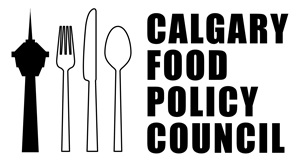By Katherine Kelly
I just returned from a trip to Japan with nine other farmers, food activists
and academics as part of a Japan-Kansas exchange looking at organic
agriculture and food movements. The goal of the exchange is to share
strategies for building a local organic food movement here and there.
We spent a week in the Saitama prefecture, northwest of Tokyo, visiting
organic and urban farms and food businesses; in June, a group of ten
Japanese visitors will come to Kansas, touring Lawrence area farms and
coming into Kansas City for the Urban Farms & Gardens Tour.
During the planning phase of the trip, I wondered if there would be enough
urban agriculture for my interests, since the descriptions of the farms on
our itinerary seemed mostly “rural.” On the first day though, as we left
the Tokyo airport by train, I realized that it was likely that all of the
agriculture we were going to see fit my definition of “urban.” (If you can
see homes and businesses while standing in your field, you are probably an
urban farmer.)
Looking out the train window, I saw that every bit of land that wasn’t a
mountain and that wasn’t developed was planted to vegetable and grain
crops. Rice paddies, wheat fields, and vegetable gardens and farms lined
the railroad tracks and could be seen interwoven with houses, apartment
buildings, and businesses. The fields were tiny--perhaps a quarter to half
an acre, sometimes there were multiple fields abutting each other,
vegetables next to rice paddies next to wheat fields next to the mountains.
The majority of our time was spent in Ogawa-Machi, a town of 30,000 which
felt more like an extension of Tokyo than the small rural town I had
expected. As we walked around the streets, I took picture after picture of
“urban” agriculture until I realized that what I had seen along the train
tracks held true here, too. At houses with no lawn (most of the city was
composed of what we would call townhomes) there would be pots of flowers or
vegetables or herbs. It wasn’t unusual to see the tiniest bit of ground
bordering a parking lot planted to potatoes, or the little triangles of land
formed by streets joining at an angle covered in bunching onions. Land
between apartment buildings had several hundred square feet of potatoes and
multiple long rows of onions and cabbages and garlic chives as well as other
vegetables. At the edges of town, butting up against the mountains, you
could see small trucks parked alongside fields, tractors working in the rice
paddies and individuals and families out working in their plots. It was
hard to tell what were commercial plots and what were home gardens;
everything was managed so intensively and so intelligently.

For part of the trip, we had home-stays at organic farms. I was privileged
to stay at the Frostpia Farm, an organic vegetable, rice, soybean, and wheat
farm. It was described as the grandparent of organic agriculture in that
area; for over 38 years, they have trained hundreds of apprentices and
helped give birth to some 30 other farms. Their vegetable production was at
the scale of KCCUA’s Community Farm, with perhaps 2 plus acres under
cultivation. In addition, they kept another three to four acres in rice,
wheat, and soybeans. Mountains enclosed the farm on two sides, the other
two sides butted up against small homes and city streets. Deliveries of
vegetables to buyers were quick, taking as little as ten minutes from farm
to grocery store and restaurant.
In the kitchens as well as on the streets, healthy vegetables were
everywhere. Many small stores and restaurants carried produce; in one
highly developed Tokyo neighborhood, we saw a "green grocer" driving around
a neighborhood selling fresh fruits and vegetables to people directly from
the truck. Each meal was dominated by vegetables; we guessed that most
people eat their “five-a-day” before breakfast is even over. Even the
prepared foods so widely available were composed primarily of vegetables.
Japan has one of the healthiest populations in the world, and you could see
it in the bodies and faces of children, adults, and seniors alike. Women in
Japan have the longest life expectancy in the world; girls born today are
expected to live to 86 years of age; boys to 79 years. The obesity rate
there is around 3% (here it is around 30%). The causes behind such good
national health are complex, attributable in no small part to the fact that
this is a nation of walkers and bikers; but healthy, plant-based eating and
the powerful daily connection to vegetable production are clearly central to
their healthier lifestyles.
The cities I saw offered me a vision of what food-productive urban spaces
might look like. The streets seemed friendlier and safer because of the
presence of so much green space; the modest and patient work of planting and
maintaining gardens somehow grounded the intense pace of living we saw. It
occurred to me that if natural or man-made disaster should strike, their
cities would be much better able to feed themselves; they have the know-how,
and the basic infrastructure. In the face of intense development and
population pressure in their cities, the Japanese have generally maintained
a commitment to small scale agriculture and food production as a social and
an economic good. The Ministry of Agriculture recently re-affirmed its
commitment to greater food self-sufficiency, and is backing that commitment
up with substantial financial and human resources.




No comments:
Post a Comment